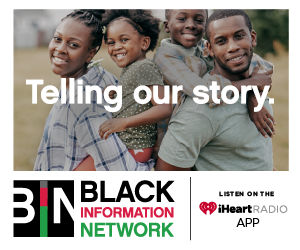on
This post is a part of our Monetization of Academia informative web series, and is available online only. To read the full article “The Monetization of Academia” as it appears in this month’s issue, visit Atlanta Tribune online for sales and subscription information.
By Jhanay Davis, Editorial Intern
Student loans are the third wheel on a student’s date with college. Some students are fortunate enough to not encounter this problem but most are joined by loans on their entire undergraduate, and sometimes graduate, date. Because many students don’t want loans, they don’t take the time to understand the commitment that they are making. This is understandable because the jargon can be quite confusing –understandable, not acceptable. To help remedy this, I have compiled a list of common (and confusing) terms used surrounding the process of taking out student loans.
Forbearance
Aside from lending a student money, a forbearance shows the kind side of the lender. It is basically an extended period of non-payment given to the student after graduation. It gives the student time to secure a job so that they can begin to pay back their loan. It’s usually about 6 months long. But, the interest still adds up during this time.
Garnishment
Garnishment is the meaner side of lenders but it comes with good reason. After graduation, if a student goes into default a lender will begin to take their money back. They do this by taking from sources of income to the student such as taking money from paychecks and keeping an entire tax refund check without a student’s permission.
Interest
Interest is the fee paid for borrowing the money. This is how the lender makes a profit.
Discharge/Forgiveness
Discharge or forgiveness relieves a student of having to pay back their loan. It is mostly granted because of situations out of the student’s control.
Default
A loan goes into default when the student has missed many scheduled payment dates. How long it takes for a loan to go into default depends on where the money was borrowed from. Once it is in default, the entire loan is due immediately and more aggressive ways of recovering the money begins. This is when collection agencies usually come into the picture.
Co-signer
The best way to understand what you’re asking of someone when you ask them to be a co-signer is to call them a co-borrower. They are helping a student to borrow money because the student has bad, little, or no credit. If you fail to pay your loan, a co-signer is held responsible so it is important to be mindful of this when it’s time to repay the loan. They helped you out with school so help them out by not messing up their credit. A co-signer is usually a family member with established credit.
PLUS Loan
The Parent Loan for Undergraduate Students is a loan program that allows parents to borrow money to fund a dependent student’s education. A credit check is required for the parents. If a parent doesn’t qualify for a PLUS loan, students can possibly qualify for more unsubsidized loan money.
Consolidate
When a student consolidates a loan, they combine more than one loan. This makes paying the loan back a lot simpler because it is one regular payment instead of multiple payments.
Subsidized Loan
A subsidized loan is a need-based loan that the government pays the interest on while the student is in school, during the six month grace period and during deferment.
Unsubsidized Loan
An unsubsidized loan gains interest while the student is in school and the government does not pay for this interest. It is not based on need.
Promissory Note
This is the contract to the loan. It should outline the terms of the loan and repayment. It has to be signed by the student before money can be sent to the school and applied to the student’s account. It should be kept until the loan is repaid in full for records.
Bankruptcy
This is known as a credit re-do but is far from it. When a person becomes bankrupt, they are declared legally unable to pay back their debt (insolvent) and their property could be split up and distributed among lenders. Bankruptcy remains on your credit report for at least 10 years and most times, student loans are not forgiven.
Delinquent
A student becomes delinquent after one missed loan payment. The next stop after this is default.
Fixed rate
A fixed rate refers to interest rates on loans that do not change for the life of the loan.
Variable rate
A variable rate refers to the interest a loan can collect. This variable has the same meaning as the variable we learned about in our middle school science classes – it can change. The rate of interest could change monthly, quarterly or annually which can change how much money you will ultimately have to repay. Unfortunately, rates usually don’t decrease.
In order to avoid the ugly side of loans, it is best to always make regular payments and always stay in contact with lenders.
Join our email list to stay connected.
Peer-to-Peer Lending
Student Loans: A Change Has Come






You must be logged in to post a comment Login